Integrative analysis of 111 reference human epigenomes
- PMID: 25693563
- PMCID: PMC4530010
- DOI: 10.1038/nature14248
Integrative analysis of 111 reference human epigenomes
Abstract
The reference human genome sequence set the stage for studies of genetic variation and its association with human disease, but epigenomic studies lack a similar reference. To address this need, the NIH Roadmap Epigenomics Consortium generated the largest collection so far of human epigenomes for primary cells and tissues. Here we describe the integrative analysis of 111 reference human epigenomes generated as part of the programme, profiled for histone modification patterns, DNA accessibility, DNA methylation and RNA expression. We establish global maps of regulatory elements, define regulatory modules of coordinated activity, and their likely activators and repressors. We show that disease- and trait-associated genetic variants are enriched in tissue-specific epigenomic marks, revealing biologically relevant cell types for diverse human traits, and providing a resource for interpreting the molecular basis of human disease. Our results demonstrate the central role of epigenomic information for understanding gene regulation, cellular differentiation and human disease.
Figures
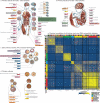
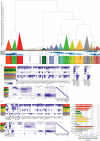
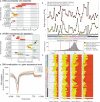
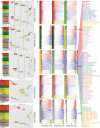
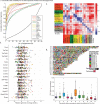
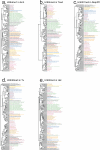
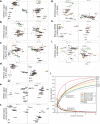
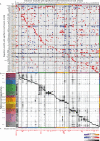
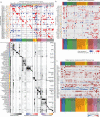
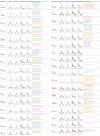
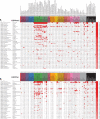
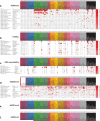

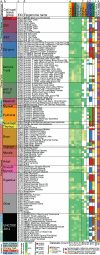
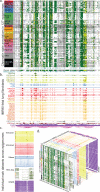


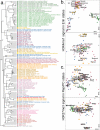
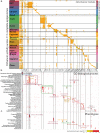


Similar articles
-
Integrative analysis of haplotype-resolved epigenomes across human tissues.Nature. 2015 Feb 19;518(7539):350-354. doi: 10.1038/nature14217. Nature. 2015. PMID: 25693566 Free PMC article.
-
Epigenomics: Roadmap for regulation.Nature. 2015 Feb 19;518(7539):314-6. doi: 10.1038/518314a. Nature. 2015. PMID: 25693562 No abstract available.
-
Regulatory genomic circuitry of human disease loci by integrative epigenomics.Nature. 2021 Feb;590(7845):300-307. doi: 10.1038/s41586-020-03145-z. Epub 2021 Feb 3. Nature. 2021. PMID: 33536621 Free PMC article.
-
Genetic sources of population epigenomic variation.Nat Rev Genet. 2016 Jun;17(6):319-32. doi: 10.1038/nrg.2016.45. Epub 2016 May 9. Nat Rev Genet. 2016. PMID: 27156976 Review.
-
Epigenomics in stress tolerance of plants under the climate change.Mol Biol Rep. 2023 Jul;50(7):6201-6216. doi: 10.1007/s11033-023-08539-6. Epub 2023 Jun 9. Mol Biol Rep. 2023. PMID: 37294468 Review.
Cited by
-
A Catalogue of Structural Variation across Ancestrally Diverse Asian Genomes.Nat Commun. 2024 Nov 4;15(1):9507. doi: 10.1038/s41467-024-53620-8. Nat Commun. 2024. PMID: 39496583
-
Generation of isogenic models of Angelman syndrome and Prader-Willi syndrome in CRISPR/Cas9-engineered human embryonic stem cells.PLoS One. 2024 Nov 1;19(11):e0311565. doi: 10.1371/journal.pone.0311565. eCollection 2024. PLoS One. 2024. PMID: 39485792 Free PMC article.
-
Genomic insights into genes expressed specifically during infancy highlight their dominant influence on the neuronal system.BMC Genomics. 2024 Oct 29;25(1):1012. doi: 10.1186/s12864-024-10911-0. BMC Genomics. 2024. PMID: 39472790 Free PMC article.
-
Case report: target antigen and subclass switch in a patient with autoimmune nodopathy.Front Immunol. 2024 Oct 7;15:1475478. doi: 10.3389/fimmu.2024.1475478. eCollection 2024. Front Immunol. 2024. PMID: 39434877 Free PMC article.
-
Genetic insights into the connection between pulmonary TB and non-communicable diseases: An integrated analysis of shared genes and potential treatment targets.PLoS One. 2024 Oct 21;19(10):e0312072. doi: 10.1371/journal.pone.0312072. eCollection 2024. PLoS One. 2024. PMID: 39432502 Free PMC article.
References
-
- Zhou VW, Goren A, Bernstein BE. Charting histone modifications and the functional organization of mammalian genomes. Nat Rev Genet. 2011;12:7–18. - PubMed
-
- Jones PA. Functions of DNA methylation: islands, start sites, gene bodies and beyond. Nat Rev Genet. 2012;13:484–492. - PubMed
-
- Smith ZD, Meissner A. DNA methylation: roles in mammalian development. Nat Rev Genet. 2013;14:204–220. - PubMed
Publication types
MeSH terms
Substances
Grants and funding
- U01ES017166/ES/NIEHS NIH HHS/United States
- R01 ES024984/ES/NIEHS NIH HHS/United States
- U01 DA025956/DA/NIDA NIH HHS/United States
- HHMI/Howard Hughes Medical Institute/United States
- U01ES017154/ES/NIEHS NIH HHS/United States
- P01 DA008227/DA/NIDA NIH HHS/United States
- P30 AG010161/AG/NIA NIH HHS/United States
- K99 HL119617/HL/NHLBI NIH HHS/United States
- R01 ES024992/ES/NIEHS NIH HHS/United States
- U01 ES017156/ES/NIEHS NIH HHS/United States
- U01DA025956/DA/NIDA NIH HHS/United States
- RF1 AG036042/AG/NIA NIH HHS/United States
- U01 AG046152/AG/NIA NIH HHS/United States
- RF1 AG015819/AG/NIA NIH HHS/United States
- F32 HL110473/HL/NHLBI NIH HHS/United States
- R00 HL119617/HL/NHLBI NIH HHS/United States
- U01 ES017154/ES/NIEHS NIH HHS/United States
- R01 HG004037/HG/NHGRI NIH HHS/United States
- R01 HG007175/HG/NHGRI NIH HHS/United States
- U01ES017155/ES/NIEHS NIH HHS/United States
- F32HL110473/HL/NHLBI NIH HHS/United States
- R01 AG017917/AG/NIA NIH HHS/United States
- R01HG004037/HG/NHGRI NIH HHS/United States
- R01AG17917/AG/NIA NIH HHS/United States
- T32 ES007032/ES/NIEHS NIH HHS/United States
- ES017166/ES/NIEHS NIH HHS/United States
- R01HG004037-S1/HG/NHGRI NIH HHS/United States
- R01 NS078839/NS/NINDS NIH HHS/United States
- U01AG46152/AG/NIA NIH HHS/United States
- R01AG15819/AG/NIA NIH HHS/United States
- R24 HD000836/HD/NICHD NIH HHS/United States
- P50 MH096890/MH/NIMH NIH HHS/United States
- R01NS078839/NS/NINDS NIH HHS/United States
- RC1 HG005334/HG/NHGRI NIH HHS/United States
- P30AG10161/AG/NIA NIH HHS/United States
- U54 HG007990/HG/NHGRI NIH HHS/United States
- T32 GM081739/GM/NIGMS NIH HHS/United States
- T32 GM007266/GM/NIGMS NIH HHS/United States
- R25 DA027995/DA/NIDA NIH HHS/United States
- 5R24HD000836/HD/NICHD NIH HHS/United States
- U01 ES017166/ES/NIEHS NIH HHS/United States
- U01ES017156/ES/NIEHS NIH HHS/United States
- U01 ES017155/ES/NIEHS NIH HHS/United States
- R01 HG007354/HG/NHGRI NIH HHS/United States
- U54 DK106829/DK/NIDDK NIH HHS/United States
- R01 AG015819/AG/NIA NIH HHS/United States
- T32 GM007198/GM/NIGMS NIH HHS/United States
- RC1HG005334/HG/NHGRI NIH HHS/United States
- K99HL119617/HL/NHLBI NIH HHS/United States
- R01 HD092419/HD/NICHD NIH HHS/United States
LinkOut - more resources
Full Text Sources
Other Literature Sources

